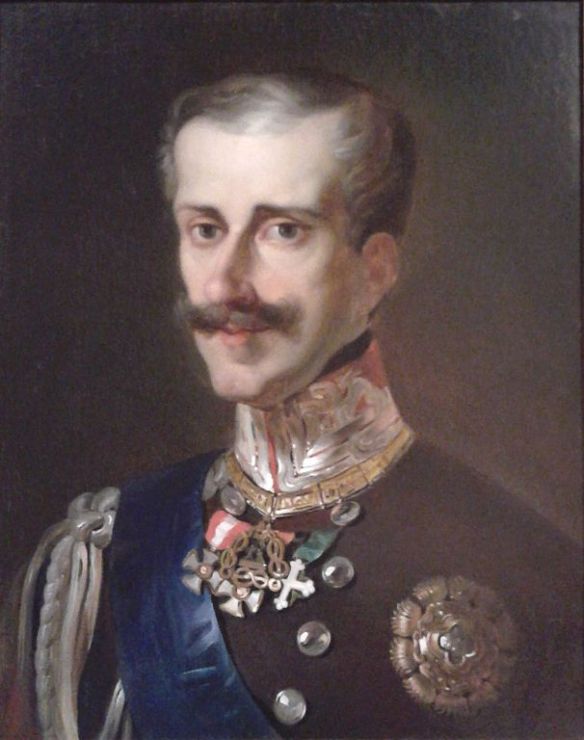In support of Italy’s rising against Austria, King Charles Albert of Sardinia took command of the Allied forces and at Goito, on the Mincio east of Mantua, he defeated the Austrians under Marshal Josef Radetzky. While the Austrians were driven back across the Adige, they were victorious a few weeks later at Santa Lucia and in every other battle of the war (10 April 1848).
The princes of Parma and Modena succumbed to revolutionary threats and joined their states with Piedmont, which now included Lombardy. Tuscany remained aloof, but committed to the war. The initial support from Pope Pius IX and Ferdinand II waned through April. Pius IX tried to appease the population of Rome, but did not want to commit his forces to war against Austria. He ordered Durando not to advance beyond the Po River. The general argued with the Pontiff, and crossed the river into Venetia, seeking to separate Radetzky from Venice. Papal forces fanned out through Venetia. Guglielmo Pepe’s large Neapolitan army never made it across the Po. Despite the granting of a constitution, republican revolutionaries attempted a coup against Ferdinand II. The plot was crushed and the king abrogated the constitution. He then ordered Pepe to return to Naples. The old general refused, but much of his army deserted him. When Pepe finally reached the Po, he had no more than 2,000 men under his command. He joined his paltry forces with the Tuscan division observing Mantua.
Charles Albert failed to coordinate operations with Durando. Radetzky, however, kept in close contact with his generals. A relief column of 16,000 men under Feldmarschall Leutnant Count Nugent arrived in Venetia to stem the advance of the Italian revolutionaries. Radetzky sent them immediately against Durando at Cornuda. Durando withdrew to Vicenza, where he remained surrounded by Austrian forces through June. The relief in Venetia permitted Radetzky to outmaneuver the Piedmontese. While Charles Albert sat at Villafranca, Radetzky’s divisions conducted a flank march to Mantua. They defeated the Tuscan and Neapolitan forces at Curtatone-Matanara on May 29 and then, from Mantua, Radetzky moved north along the west bank of the Mincio. The crafty Radetzky threatened to cut Charles Albert and his army off from Piedmont. The movement, however, was discovered and Charles Albert rapidly countermarched to intercept the Austrians. Their armies clashed at Goito on May 30, with the Piedmontese catching the Austrian divisions on the line of march. Defeated, Radetzky withdrew to Mantua. The same day, Peschiera fell.
Charles Albert lacked sufficient forces to besiege Mantua or Verona properly or to continue the offensive into Venetia beyond these victories. The loss of Tuscan, Neapolitan, and Papal military forces removed valuable allies and manpower, though the Piedmontese now mustered 75,000, including thousands of Lombard volunteers. Charles Albert returned to Villafranca and held to his position screening Mantua to the south and Verona to the northeast.
